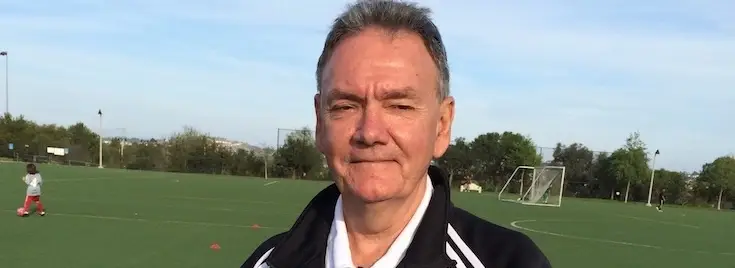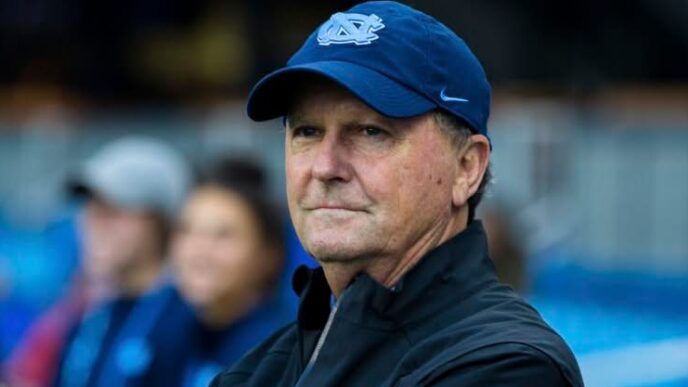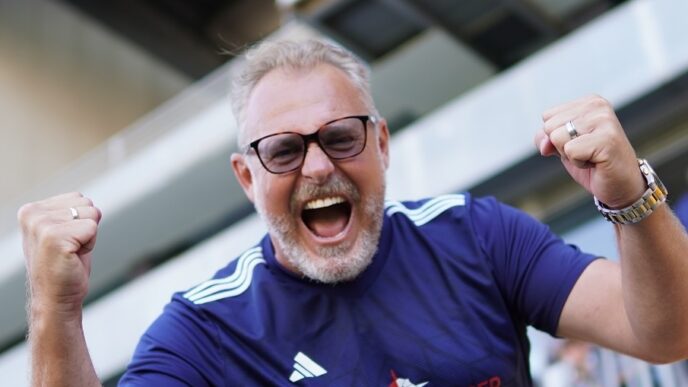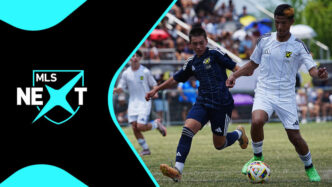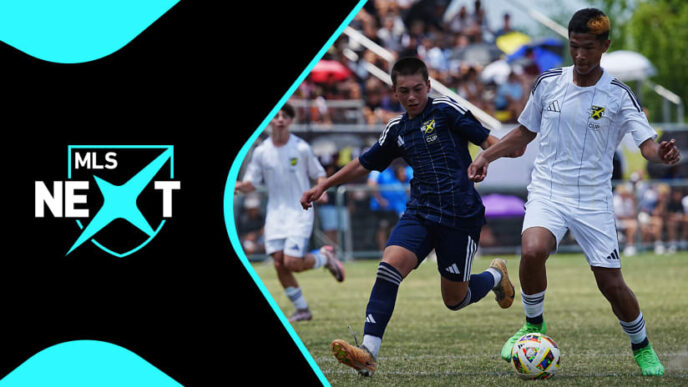Dr. Ron Quinn on Youth Soccer in America
A leading authority in youth soccer and coaching education, Dr. Ron Quinn shares his insight on American Youth Soccer today, what we’re doing right and what needs to change.
Dr. Ron Quinn is one of the first to begin studying youth soccer in America at over 40 years of age. Now Associate Professor in the Department of Sport Studies, and coordinator of the online graduate program in coaching education and athlete development at Xavier University — Quinn one of the primary co-authors of the US Youth Soccer National Youth License and the State Youth Modules. Working alongside Sam Snow, and the other NYL authors, Quinn helped open the minds of many and pioneered the concept of going beyond the X’s and Os.’
A member of the United States Youth Soccer (USYS) National Staff, Quinn was awarded the 2006 National Soccer Coaches Association of America (NSCAA) Youth Long-Term Achievement Award and, in 2007, the US Youth Soccer Dr. Thomas Fleck Excellence in Youth Coaching Education Award.
SoccerToday’s Diane Scavuzzo asked Dr. Ron Quinn for his thoughts on youth soccer in America, specifically what needs to change to create a brighter, more positive future for the sport.

Diane Scavuzzo: What is right and what is wrong in American youth soccer today?
Dr. Ron Quinn: There are many things right with youth soccer in America.
Soccer is viewed as the sport of choice for young kids.
In many places across the USA, we have outstanding soccer facilities.
Technology and the internet provide greater access to information, and countless individuals are contributing to the game’s growth.
However, the same factors that are right, are the same ones that can be wrong.
As a preferred sport, coaches and parents become too involved and have unrealistic expectations.
I coined the term, “The Game in the Child” in 1988, meaning that we have to allow a child to experience and learn the game from within, not the “Child in the Game” perspective, where we place the child in an adult structured environment, expecting, for example, to stay on one side of the field or position, when they are seven.
The move to small-sided modified games has helped but took years to change.
Children learn through both unstructured and structured play, but today, it seems that the balance is completely out of balance.

If there is not a scheduled practice, are kids playing soccer or choosing to do something else? More than likely, it is something else, largely because they have not been able to take ownership of the game.
Children are told when, where, and how long to practice, and at games, told where to run, when to dribble, pass and shoot, only to look at the sidelines for approval (most often disapproval) every time they touch the ball.
As a result, it never becomes “their” game, only an activity that adults created.
The National Youth License (NYL), created in 1996, was on the right path, as the first child-centered coaching education in the United States, and most likely, on the planet. It took the approach, that if we take care in the beginning, the end will take care of itself.
This means that if the first experience is not positive and growth-enhancing, a child’s development and self-view could be delayed. The course was based on sound child development principles and integrated a holistic philosophy, which states that nothing happens in isolation.
It was the first course to introduce psychomotor, psychosocial, social-emotional, and cognitive theories and practices, which have now become commonplace.
Unfortunately, the USSF has removed it from their coaching scheme.

Diane Scavuzzo: What needs to change in youth soccer today?
Dr. Ron Quinn: This is a very complex issue because we are a complex and diverse society, and I would encourage parents, coaches, and administrators to read the Aspen Institute, Project Play report, that Sam Snow mentioned in his interview on What’s Right and What’s Wrong.
We need to have mandatory child-centered youth coaching education for coaches and parents.
And, we need realize that we do not have elite soccer players at age nine.
We need to believe that the “cream rises to the top” given the proper environment rather than what seems to be our present “last man/women standing” approach, which selects people out to get to the best.
We need to keep as many children in the game for as long as possible and not create elite, all-star teams for children aged 10 and younger.

Placing what is perceived to be the best players together at the youth level, most likely, only creates average players in the end, because a child’s focus is to stay on the team, by not making mistakes; what happens then to risk-taking and creativity?
It is ironic that we have a society that values diversity, but yet, wants to create homogeneous teams with 9-year-olds.
Reciprocal or peer teaching benefits both the skilled and yet-to-be skilled person.
How else can our kids learn compassion, patience, and cooperation?
We need to teach cooperation before competition so that children learn to accept and seek out challenges and compete from within.
In short, we need to give children back their childhood. We can always increase the intensity when they are ready but never dial it back.
When the players are more mature in all areas of development, not just the physical—usually in the middle teen years—they will be able to make the commitment needed to meet the physical, psychological, social, and emotional demands to move to the next level.
Diane Scavuzzo: Where have we fallen short and how can that be improved?
Dr. Ron Quinn: Sadly, we have moved from an educational model to a business model in youth sports, especially youth soccer.
Our educational system has outsourced children’s physical development. In 1937, a group of educators, physical educators, physicians, and child psychologists met in Atlanta to discuss sport and competition in elementary schools.
The result was a position statement that discouraged sports competition based on children’s developmental stage to handle the competitive stress. Unfortunately, well-intended adults outside of the educational system didn’t listen. Hence, the birth of community-based sports programs. Interesting enough, Carl Stolz founded Little League baseball in 1938, and the rest, they say, is history.
We need to view youth sport as part of the human developmental process.
When teaching the National Youth License course or talking to a group of parents, I always ask this question:

What is required of an adult to work with a child from 9:00 am to 3:00 pm? Universally, the response is “patience” — but once we get beyond that, the person is identified as a teacher — with a minimum of a four-year degree in teaching.
The follow-up question is: What is required of another adult to work with that same child from 3:00 to 9:00 p.m.? The answer: I’m available!
The real question then becomes, how do the child’s needs change at 3:00?
It doesn’t. This is not to say that every adult needs a four-year degree in education, physical education, or sports pedagogy, but for the sake of the child, we can’t be at both ends of the spectrum.
This can only be accomplished through developmentally appropriate coach education.
Diane Scavuzzo: What do you recommend?
Dr. Ron Quinn: We are not Spain, Germany, Brazil or the UK, but we can learn from them, without trying to duplicate their systems. We need an American system that incorporates our educational system.
Our players play too many games, without sufficient practice or recovery.
If players in the USSF DA’s are only allowed to play one match on a weekend because it is best for their development, then why do we allow non-DA players to play in tournaments, where they play, possibly, two to four matches between Friday and Sunday?
I believe everyone reading this knows that answer: money.
Diverse pathways are needed for a child to reach the highest levels; this typically involves the recreational or participation model or the performance model. However, the issue is, at what stage—age or ability—should these paths begin or diverge? I would contend, certainly not before the age of 10.

We need to take a long-term athlete development approach that addresses participation across the life span, not just one for elite players.
We need to move from prescriptive, joy-stick coaching, to a problem-based learning approach.
How can we expect to develop players who can solve problems on the field if we never give them any problems to solve in practice? Problem-solving and decision-making are skills, and just like any other soccer skill, they need to be practiced. It is only then that players can begin to create and internalize the game for themselves so that the “Game in the Child” emerges.
Photo Credit: Youth soccer action shots – Shutterstock.com
Comment from Dr. Ron Quinn: This has been an excellent series of editorials, and I appreciate the opportunity to be part of the dialog. I would say that I agree with many of the contributors, especially Sam Snow, Christian Lavers, and Brian Smith’s comments.
